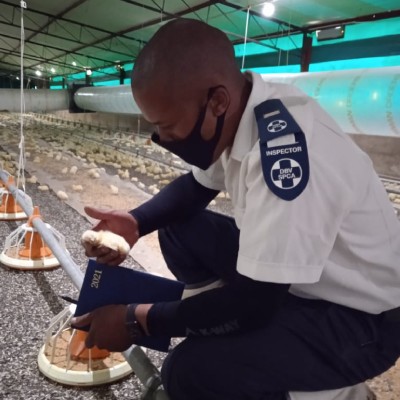South Africa’s poultry industry whether layer (egg) or broiler (meat) starts at hatcheries. At these facilities, fertile eggs are hatched after 21 days of incubation and the day-old chicks are transported to either broiler farms or layer farms, depending on the type of chick being hatched at the particular hatchery.
Chicks hatched at facilities dealing with the broiler industry are all sent to broiler farms where they are raised for slaughter. At hatcheries dealing with layer birds, only the female chicks (after being sexed) are shipped off to layer farms. The male chicks are sadly regarded as “waste” and are crushed to death in large macerators. A macerator has rotating blades and the chicks are fed through the machine into the blades whilst still alive, resulting in them being crushed to death.
Unhatched eggs which contain live embryos are also macerated as a means of disposal as well as chicks with deformities. This is an industry norm all over the world. Some hatcheries have in the past dump unhatched eggs and deformed chicks at land-fill and dumping sites, resulting in severe welfare implications. The NSPCA now ensures that every hatchery has a verifiable disposal method of unhatched eggs, male chicks and deformed chicks that are unsaleable.

The NSPCA is committed to improving the quality of life of all poultry at hatcheries and the Farm Animal Protection Unit’s dedicated Inspectorate, guided by the Animals Protection Act No. 71 of 1962, inspect all hatcheries across the country addressing different facets of the life of these animals including:
- Hatcheries are inspected on hatching days to monitor and ensure the humane handling of chicks during the various husbandry practices before the birds are shipped out to farms;
- Chicks unfit for future production are macerated and Inspectors ensure that the macerators are working at optimum speed confirming there are no recognisable body parts post maceration;
- Some hatcheries practice debeaking and the removal of spurs using laser or heat cauterisation. Inspectors ensure that this is done with the least possible stress and pain caused;
- Transportation is monitored to ensure chicks are not overcrowded in transportation crates and that vehicles have adequate ventilation;

